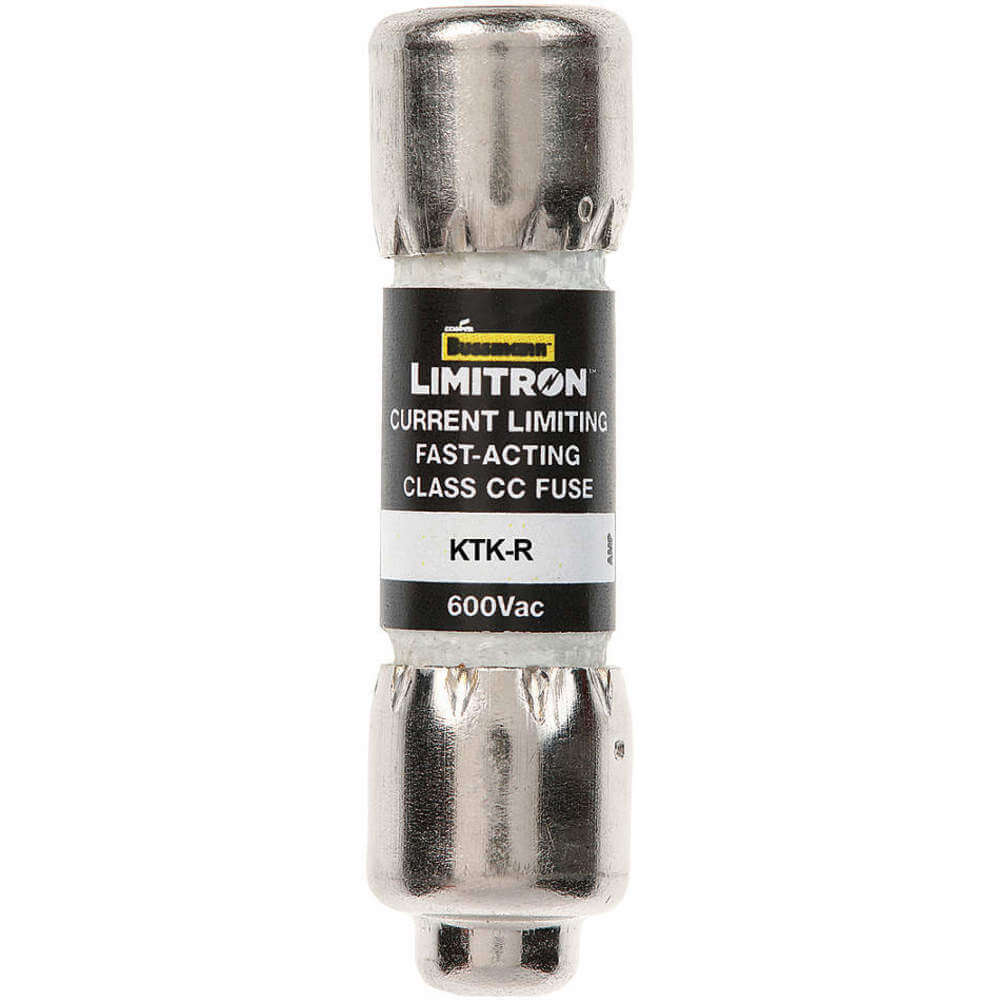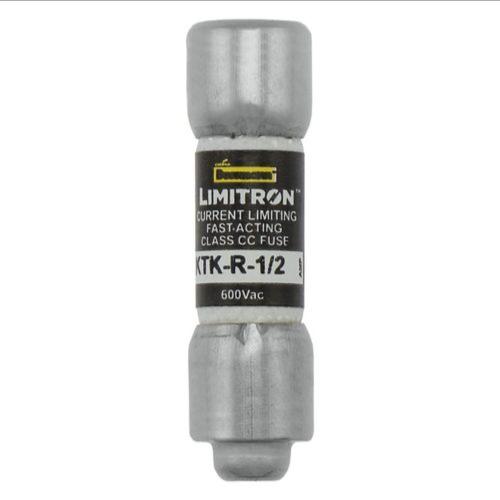Bussmann KTK-R-1-1/2 fuse is a type of safety device that protects electrical circuits and equipment from overcurrent conditions. It interrupts the flow of electrical current in a circuit if it exceeds a certain level, thereby preventing damage to the circuit or connected devices. This fuse is designed for small motor starters, control panels and equipment with relatively low current ratings.
Working Mechanism:
- During regular operation, this Bussmann Class CC fuse allows electrical current to flow without interruption.
- When an overcurrent event (short circuit or excessive load) happens in the circuit, the current passing through the fuse spikes beyond its intended capacity.
- This excess current generates heat due to increased resistance.
- The heightened heat from the overcurrent causes the fuse element to reach its melting point.
- The fuse element melts precisely at a predetermined current threshold slightly above the normal operating range.
- As the fuse element melts, it creates an open circuit within the fuse.
- This open circuit acts as a barrier to the excessive current, breaking the circuit and preventing further flow of electricity.
Frequently Asked Questions:
Q. How do I choose the right fuse for my application?
A. Select a fuse with a current rating slightly above the normal operating current of the circuit. Consider the fuse's voltage rating, interrupting capacity and time-current characteristics.
Q. What is the difference between fast-acting and slow-blow fuses?
A. Fast-acting fuses quickly respond to overcurrent conditions, while slow-blow (time-delay) fuses allow a temporary overcurrent without blowing, which is useful for devices with startup surges.
Q. How do I know if a fuse has blown?
A. A blown fuse can be identified by a visibly melted or broken fuse element.
 Change Country
Change Country

 In Stock : 465 Units
In Stock : 465 Units
